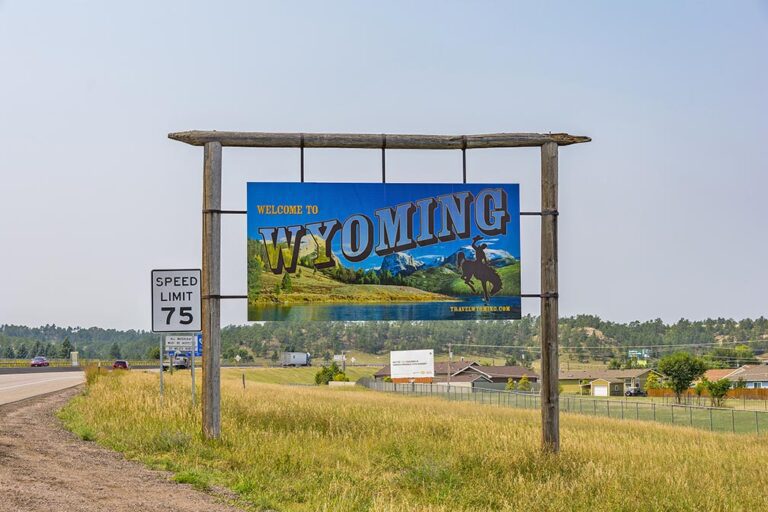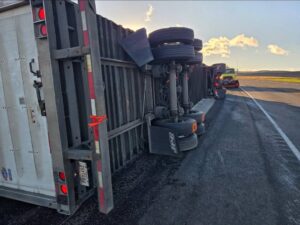ATLANTA — A Georgia law firm that specializes in accident cases has issued the results of a study focusing on the most dangerous — and the safest– states for driving in the U.S.
In 2023, the United States faced a significant challenge in road safety, with the National Safety Council reporting 44,986 motor vehicle fatalities, averaging 3,749 deaths per month, or about 123 daily.
Baderscott.com’s findings rank Wyoming as the most dangerous state for driving, according to data from 2022 and 2023.
Despite having only a population of 584,100, Wyoming has a record 27 fatality rate per 100,000 people, according to the study.
Mississippi ranks second with a fatality rate of 27 per 100,000 people. However, the state has a far larger population — 2.9 million — compared to Wyoming, the study notes.
With a population of 19,500, New York is the safest state, reporting five deaths per 100,000 people.
Following are the states that rank three through 10 as the most dangerous for drivers in the U.S. All statistics are from 2023.
Arkansas
With 3.1 million inhabitants, Arkansas has a fatality rate of 22 deaths per 100,00 people, resulting in 688.11 deaths and ranking third on the list.
Tennessee
Despite a larger population of 7.1 million, Tennessee shares a fatality rate of 22 deaths per 100,000 people, recording the highest absolute number of deaths at 1,569.
South Carolina
Boasting 5.4 million residents, South Carolina’s fatality rate is 21 deaths per 100,000 people, resulting in a relatively high total of 1,138.68 deaths.
New Mexico
With 2.1 million people, New Mexico has a fatality rate of 21 deaths per 100,000 people, leading to a total of 447.50 deaths, proportionally high for its population size.
Alabama
Housing 5.1 million people, Alabama has a fatality rate of 20 deaths per 100,000 people, recording a total of 1,029.87 deaths, indicating a significant road safety issue.
Kentucky
With 4.5 million residents, Kentucky has a fatality rate of 20 deaths per 100,000 people, recording a total of 910.33 deaths, positioning it eighth on the list.
Louisiana
Hosting 4.6 million residents, Louisiana reports a lower fatality rate of 19 deaths per 100,000 people, with a total of 881.21 deaths.
Arizona
With a population of 7.4 million, Arizona has a fatality rate of 19 deaths per 100,000 people, resulting in the second-highest absolute number of deaths at 1,408.41.
New York, Massachusetts and New Jersey were the safest states, according to the study.
With a substantial population of over 19.5 million, New York stands as the safest state with a low fatality rate of 5 deaths per 100,000 people, totaling 1,055.92 deaths, which demonstrates their effective road safety policies in an extremely high-density region.
Massachusetts follows with a fatality rate of six deaths per 100,000 people from a population of 7 million. The total number of deaths are 392.33, “indicating a strong commitment to road safety,” the study notes.
New Jersey, with a population nearing 9.3 million, has a fatality rate of seven deaths per 100,000 people. Its total deaths are 658.99, “positioning it as one of the safest states for driving,” according to the study.
For a complete look at the survey, click here.
Born in Pine Bluff, Arkansas, and raised in East Texas, John Worthen returned to his home state to attend college in 1998 and decided to make his life in The Natural State. Worthen is a 20-year veteran of the journalism industry and has covered just about every topic there is. He has a passion for writing and telling stories. He has worked as a beat reporter and bureau chief for a statewide newspaper and as managing editor of a regional newspaper in Arkansas. Additionally, Worthen has been a prolific freelance journalist for two decades, and has been published in several travel magazines and on travel websites.
















Rates per 100,000 people will always put lower poulation states in the bottom or top of various lists. Drivers in wyoming probably drive more miles per driver on the average than most other states thereby giving a much greater risk exposure. Despite that with only 130 deaths per year I’d hardly rank Wyoming as unsafe. This is just another meanings stat designed for clickbait.
Wyoming has the highest truckdrivers that have to deal with high snow and high winds storms but a very pleasent place to raise children.
The comparison between densely populated states like New York and New Jersey and sparsely populated states like Wyoming is not valid, because many people in densely populated cities like NYC do not drive at all, ever – do not own a car.
Another factor that makes this a bad comparison is the average distance traveled. For example, I live in Wyoming, and must drive 80 miles to get to the Walmart closest to my home. Anyone living in a large city would likely drive no more than 10 miles to make the equivalent trip.